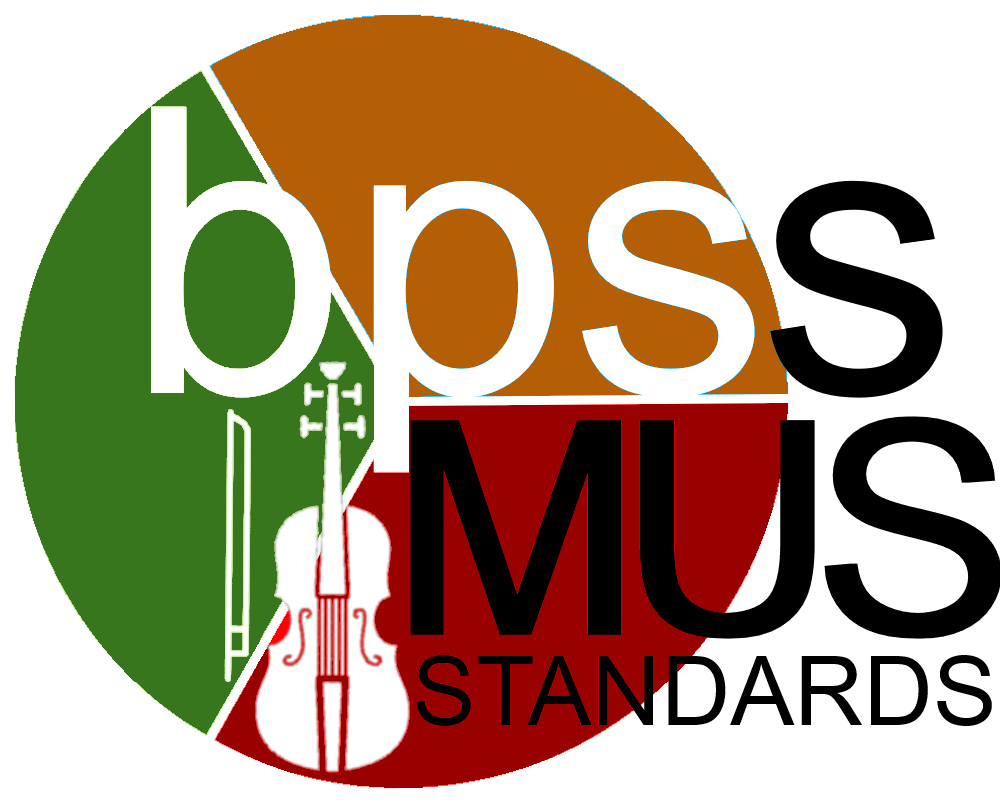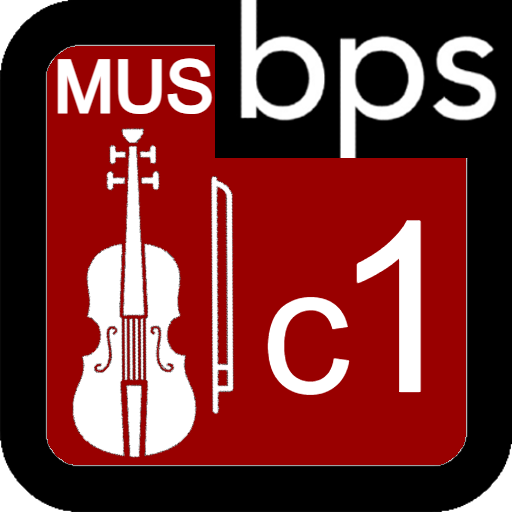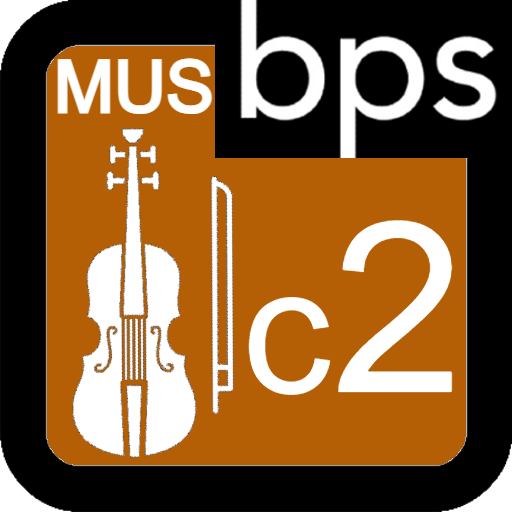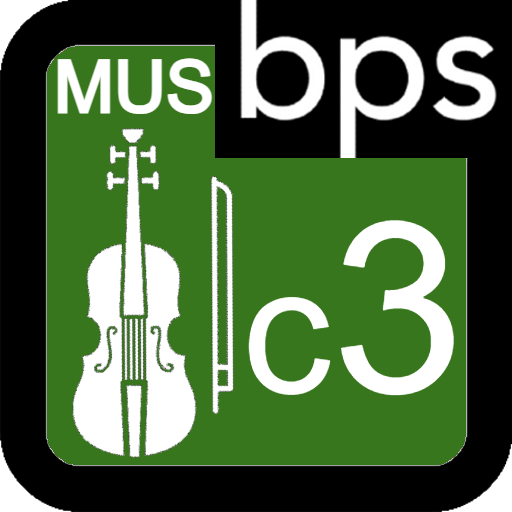MUS-06.c1  MUS-06.c1 MUS-06.c1 Category  | (c1) Category 1: Executive Skills and Knowledge
The technical skills and understanding required to physically perform on the instrument, such as body format, bowing, etc.
|
MUS-06.c1.A
Body Format | MUS-06.c1.B
Left Hand | MUS-06.c1.C
Right Hand |
|---|
| Students establish a lengthened and balanced posture; support instrument without tension, demonstrate ease of motion; format is adjusted for physiological changes due to growth; control of weight distribution, unilateral movement, bilateral movement,
in sitting and standing position. | Students perform with correct address and angle of left arm-wrist-hand-finger to instrument, that is balanced and free of tension; independence of fingers; ease of motion and control of finger weight; produces characteristic tone, with vibrato (as
appropriate); shows understanding and ability to apply fingerings, finger patterns, shifting, extensions. | Students perform with fluent bowing motion, control of variables (weight, angle, speed, and placement), in a variety of bowing techniques and articulations, with characteristic tone. |
CalculationsCategories are larger groups of related standards. The category grade is a calculation of all the related standards. Click on the standard name below each category to access the learning targets and rubrics/ proficiency scales for individual
standards within the category. |
|
MUS-06.c1.A  | 6th Grade (MUS) Targeted String Standard (c1) Category 1: Executive Skills and Knowledge (A) Body Format
Students perform with a lengthened and balanced posture; supports instrument without tension, demonstrate ease of motion; format is adjusted for physiological changes due to growth; control of weight distribution, unilateral movement, bilateral movement, in sitting and standing position.
|
 Proficiency Scale Proficiency Scale
Learning Targets
- 2.1 Unilateral movement (connected to bowing motion)
- 2.2 Bilateral movement (connected to bowing motion)
- 2.3 Continue Baseline criteria, monitoring and adjusting to physical characteristics of individual students
|
|
MUS-06.c1.B  | 6th Grade (MUS) Targeted String Standard (c1) Category 1: Executive Skills and Knowledge (B) Left Hand Skills and Knowledge
Students perform with the correct placement and angle of the left arm-wrist-hand-fingers to the instrument; demonstrate position that is balanced and free of tension; play with independence of fingers, ease of motion and control of finger weight; produce characteristic tone, with vibrato (as appropriate); show understanding and ability to apply fingerings, finger patterns, shifting, extensions.
|
 Proficiency Scale Proficiency Scale
Learning Targets
- 2.1 Extensions
- a. Violin/Viola
- b. Cello/Bass
- 2.2 Introduction of positions
- a. Violin/Viola
- b. Cello/Bass
- c. Half position
- 2.3 Refinement of shifting
- a. Violin/Viola
- b. Cello
- c. Bass
- 2.4 Harmonics
- 2.5 Finger substitutions
- 2.6 Simple double-stops (one open string, one fingered string)
- 2.7 Chromatic alterations
|
|
MUS-06.c1.C  | 6th Grade (MUS) Targeted String Standard (c1) Category 1: Executive Skills and Knowledge (C) Right Hand Skills and Knowledge
Students perform with fluent bowing motion, control of variables (weight, angle, speed, and placement), in a variety of bowing techniques and articulations, with characteristic tone.
|
 Proficiency Scale Proficiency Scale
Learning Targets
- 2.1 Extending the détaché bow stroke
- 2.2 On-string strokes
- a. Martelé
- b. Slurred Staccato
- c. Hooked Bowings
- d. Longer slurs (three or more notes)
- e. Accented Détaché
- 2.3 Off-string strokes
- 2.4 Simple double stops
- 2.5 Extension of technique related to control of bowing variables (weight, angle, speed, and placement)
|
|
MUS-06.c2  MUS-06.c2 MUS-06.c2 Category  | (c2) Category 2: Musicianship Skills and Knowledge
The elements such as understanding of rhythms, aural skills, note-reading skills, etc., that relate to musical understandings. |
MUS-06.c2.A
Tonal Aural Skills and Ear Training | MUS-06.c2.B
Rhythmic Aural Skills and Ear Training | MUS-06.c2.C
Creative Musicianship |
|---|
| Students demonstrate the following abilities: matching and manipulating pitch, playing with a sense of tonality, tonal-melodic and tonal-harmonic function (horizontal/vertical relationships/functions of tonality), ear-to-hand skills, aural and kinesthetic
awareness of pitch accuracy and intonation, including and related to improvisation. | Students perform simple and complex rhythm patterns/functions, with stray pulse/beat, correct sense of meter, metric organization and phrasing, in a variety of meters. | Students demonstrate creative musicianship skills at all stages of development, including the ability to improvise variations of rhythmic, melodic, and harmonic patterns, within the traditions and standards of a variety of genres and practices:
arrange and compose melodies and harmonies according to specific criteria and guidelines. |
MUS-06.c2.D
Music Literacy | MUS-06.c2.E
Ensemble Skills |
|---|
| Students demonstrate sequential music literacy skills (decoding and comprehension), defined as an association of sound-to-symbol, in a given musical context, which includes: predictive components (understanding of reading based on audition of written
material) and knowledge of symbols and notation related to pitch, rhythm, dynamics, tonality, clef, articulation, etc.) based on the principle that sound comes before sight. | Students perform in an ensemble, demonstrating sensitivity and the ability to adjust and maintain a uniform sense of rhythm, tempo, articulation, tone, blend, balance, and dynamics; understand conducting gestures, follow conductor and section leader,
and are able to synchronize bowings. |
CalculationsCategories are larger groups of related standards. The category grade is a calculation of all the related standards. Click on the standard name below each category to access the learning targets and rubrics/ proficiency scales for individual standards within the category. |
|
MUS-06.c2.A  | 6th Grade (MUS) Targeted String Standard (c2) Category 2: Musicianship Skills and Knowledge (A) Tonal Aural Skills and Ear Training
Students demonstrate the following abilities: matching and manipulating pitch, playing with a sense of tonality, tonal-melodic and tonal-harmonic function (horizontal/vertical relationships/functions of tonality), ear-to-hand skills, aural and kinesthetic awareness of pitch accuracy and intonation, including and related to improvisation.
|
 Proficiency Scale Proficiency Scale
Learning Targets
- 2.1 Students perform, by ear, melodic tonal patterns (patterns and melodies within a one-octave scale) in major and minor tonalities (vocally, pizzicato, and/or arco; neutral syllable, then solfege).
- 2.2 Students manipulate single pitches to adjust intonation and listen for “ringing tones” (resonance, sympathetic vibrations).
- 2.3 Students perform, by ear, primary (tonic, dominant, and subdominant) harmonic tonal patterns (vocally, pizzicato, and/or arco; neutral syllables, then solfege).
- 2.4 Students improvise (vocally, pizzicato, and/or arco) melodic tonal patterns (within an octave).
- 2.5 Students improvise (vocally, pizzicato, and/or arco) harmonic tonal patterns (vocally, pizzicato, and/or arco; neutral syllable, then solfege).
- 2.6 Students alter melodies and harmonies (major to minor and vice versa).
- 2.7 Students use fine tuners to adjust strings to match an external tonal reference.
|
|
MUS-06.c2.B  | 6th Grade (MUS) Targeted String Standard (c2) Category 2: Musicianship Skills and Knowledge (B) Rhythmic Aural Skills and Ear Training
Students perform simple and complex rhythm patterns/functions, with stray pulse/beat, correct sense of meter, metric organization and phrasing, in a variety of meters.
|
 Proficiency Scale Proficiency Scale
Learning Targets
- 2.1 Students will perform rhythm patterns containing subdivisions.
- 2.2 Students will perform rhythm patterns containing elongations.
- 2.3 Students will perform rhythm patterns containing rests.
- 2.4 Students will improvise rhythm patterns corresponding to Learning Tasks 2.1-2.3.
|
|
MUS-06.c2.C  | 6th Grade (MUS) Targeted String Standard (c2) Category 2: Musicianship Skills and Knowledge (C) Creative Musicianship
Students demonstrate creative musicianship skills at all stages of development, including the ability to improvise variations of rhythmic, melodic, and harmonic patterns, within the traditions and standards of a variety of genres and practices: arrange and compose melodies and harmonies according to specific criteria and guidelines.
|
 Proficiency Scale Proficiency Scale
Learning Targets
- 2.1 Rhythmic: Students teach each other short original rhythmic phrases through call-and-response.
- 2.2 Tonal (Melodic and harmonic): Students use the root, third, and fifth of a chord to solo over student generated accompaniment.
- 2.3 Textural: Students translate a visual or experiential narrative into original sounds on their instrument (music as storytelling).
- 2.4 Composition: Students add traditional notation into their original scores.
- 2.5 Creative Leadership: Students rehearse conducting the group with individually created hand signals.
|
|
MUS-06.c2.D  | 6th Grade (MUS) Targeted String Standard (c2) Category 2: Musicianship Skills and Knowledge (D) Music Literacy
Students demonstrate sequential music literacy skills (decoding and comprehension), defined as an association of sound-to-symbol, in a given musical context, which includes: predictive components (understanding of reading based on audiation of written material) and knowledge of symbols and notation related to pitch, rhythm, dynamics, tonality, clef, articulation, etc.) based on the principle that sound comes before sight.
|
 Proficiency Scale Proficiency Scale
Learning Targets
- 2.1 Students correctly identify tonality (including key signature) and perform repertoire through three sharps and three flats.
- 2.2 Students correctly identify interval labels (numbers only).
- 2.3 Students correctly identify musical forms: Theme and Variations, Rondo, and Minuet and Trio.
|
|
MUS-06.c2.E  | 6th Grade (MUS) Targeted String Standard (c2) Category 2: Musicianship Skills and Knowledge (E) Ensemble Skills
Students perform in an ensemble, demonstrating sensitivity and the ability to adjust and maintain a uniform sense of rhythm, tempo, articulation, tone, blend, balance, and dynamics; understand conducting gestures, follow conductor and section leader, and are able to synchronize bowings.
|
 Proficiency Scale Proficiency Scale
Learning Targets
- 2.1 Students perform various tempos with a steady pulse.
- 2.2 Students adjust pitch within the ensemble.
- 2.3 Students demonstrate understanding of appropriate balance of the melody and accompanying lines.
- 2.4 Students imitate rhythm patterns at slow, medium, and fast tempos following a conductor’s beat pattern and cues.
- 2.5 Students match bow usage to section/ensemble.
|
|
MUS-06.c3  MUS-06.c3 MUS-06.c3 Category  | (c3) Category 3: Artistic Skills and Knowledge
The elements that relate to the creative and expressive side of music-making, beyond mere performance, such as improvisation, performance with artistic understanding, etc.
|
MUS-06.c3.A
Expressive Element | MUS-06.c3.B
Historical and Cultural Elements | MUS-06.c3.C
Evaluation of Music and Musical Performance |
|---|
| Students employ expressive elements of music to communicate abstract thoughts, ideas, and meaning; to share the depth of the human experience; and for self-expression and understanding. | Students perform music from a wide range of genres in a culturally authentic manner, reflecting the diverse nature of people, groups, and cultures found across the world and in the U.S.; performances demonstrate an understanding of historical and cultural contexts, and reflect stylistic traditions and practice. | Students evaluate and analyze music for executive skill, musicianship, and artistic considerations; evaluate and analyze the musical performances of themselves and others based on established criteria. |
CalculationsCategories are larger groups of related standards. The category grade is a calculation of all the related standards. Click on the standard name below each category to access the learning targets and rubrics/ proficiency scales for individual
standards within the category. |
|
MUS-06.c3.A  | 6th Grade (MUS) Targeted String Standard (c3) Category 3: Artistic Skills and Knowledge (A) Expressive Elements
Students employ expressive elements of music to communicate abstract thoughts, ideas, and meaning, share the depth of the human experience, and develop expression and understanding.
|
 Proficiency Scale Proficiency Scale
Learning Targets
- 2.1 Students evaluate and demonstrate multiple ways of performing a single melody.
- 2.2 Students apply knowledge of performance practice to selected repertoire.
- 2.3 Students perform with articulations corresponding to developing-level right-hand technical skills.
|
|
MUS-06.c3.B  | 6th Grade (MUS) Targeted String Standard (c3) Category 3: Artistic Skills and Knowledge (B) Historical and Cultural Elements
Students listen to, respond to, and perform music from a wide range of genres in a culturally authentic manner, reflecting the diverse nature of people groups and cultures across the world and in the United States, and performances demonstrate an understanding of historical and cultural contexts and reflect stylistic traditions and practice
|
 Proficiency Scale Proficiency Scale
Learning Targets
- 2.1 Students listen to selected music from diverse cultures and musical eras.
- 2.2 Students identify, describe, and compare distinguishing characteristics of composers and styles from selected repertoire.
- 2.3 Students perform music from an expanding repertoire of diverse styles.
|
|
MUS-06.c3.C  | 6th Grade (MUS) Targeted String Standard (c3) Category 3: Artistic Skills and Knowledge (C) Evaluation of Music and Musical Performance
Students evaluate and analyze music for executive skill, musicianship, and artistic considerations and evaluate and analyze the individual and group performances based on appropriate criteria.
|
 Proficiency Scale Proficiency Scale
Learning Targets
- 2.1 Students evaluate individual and group performance using established criteria.
- 2.2 Students describe personal preference in music listening and group performance.
- 2.3 Students, with teacher assistance, establish criteria for evaluating individual and group performance based on the level of music performed.
|
|




















